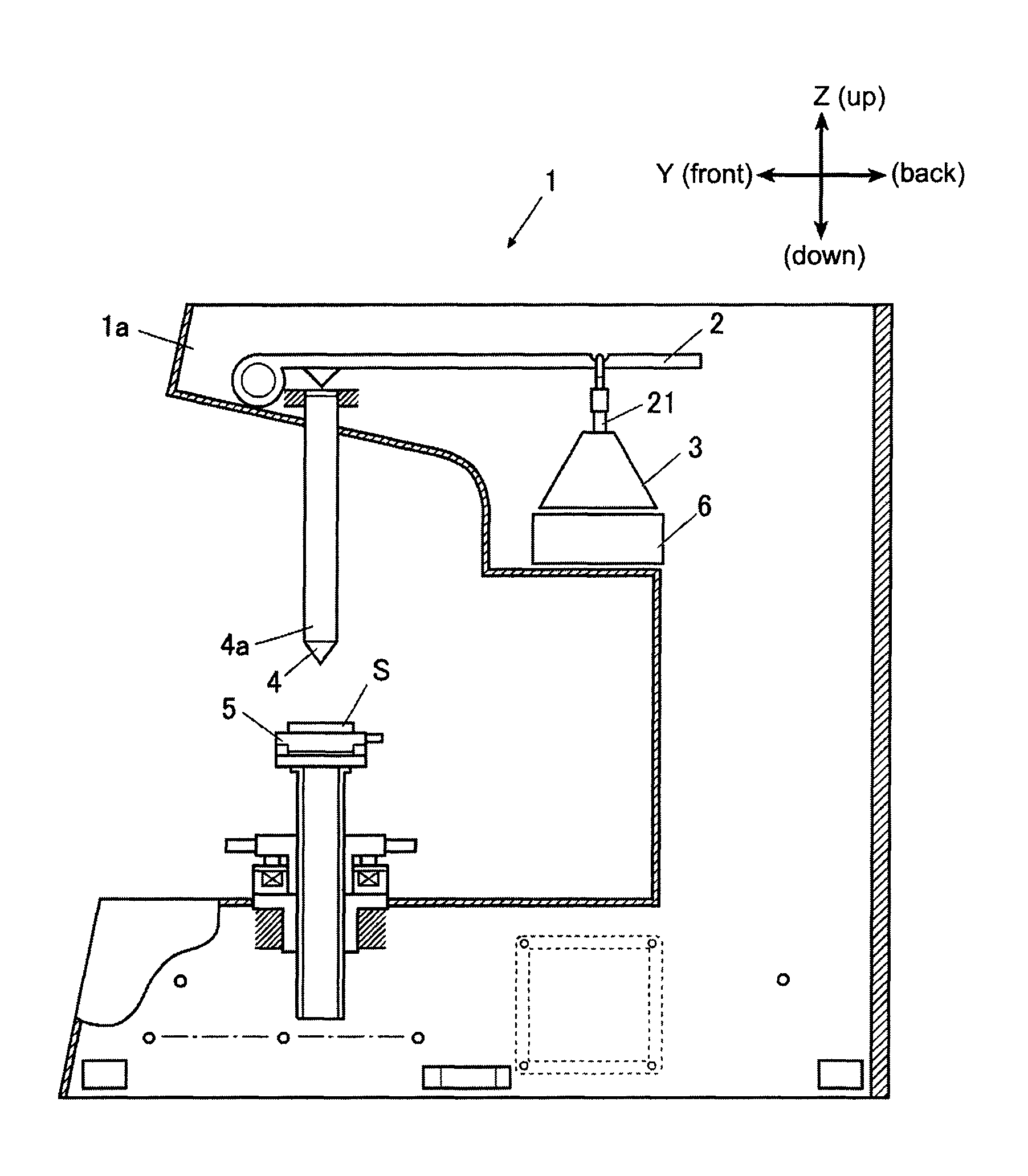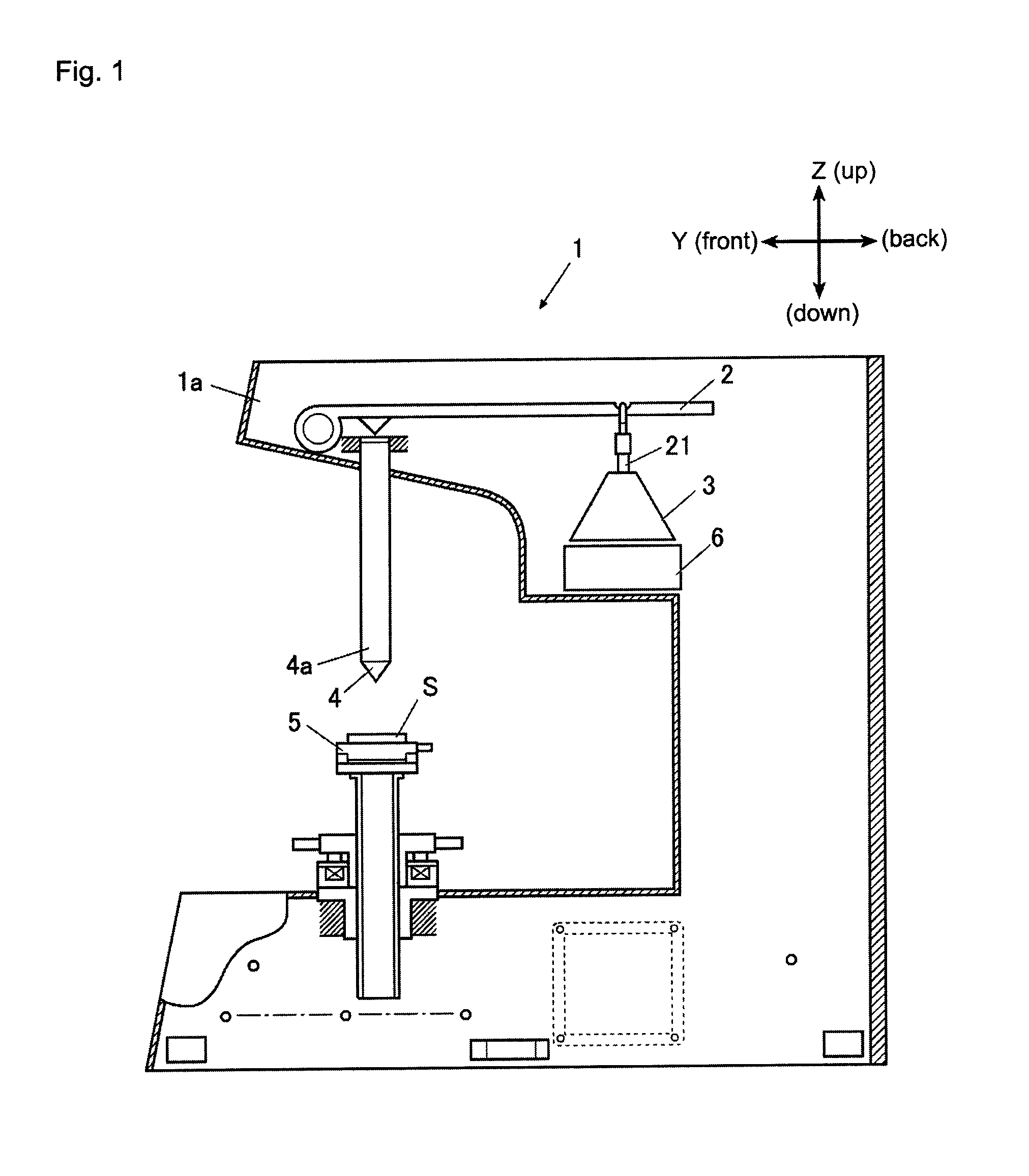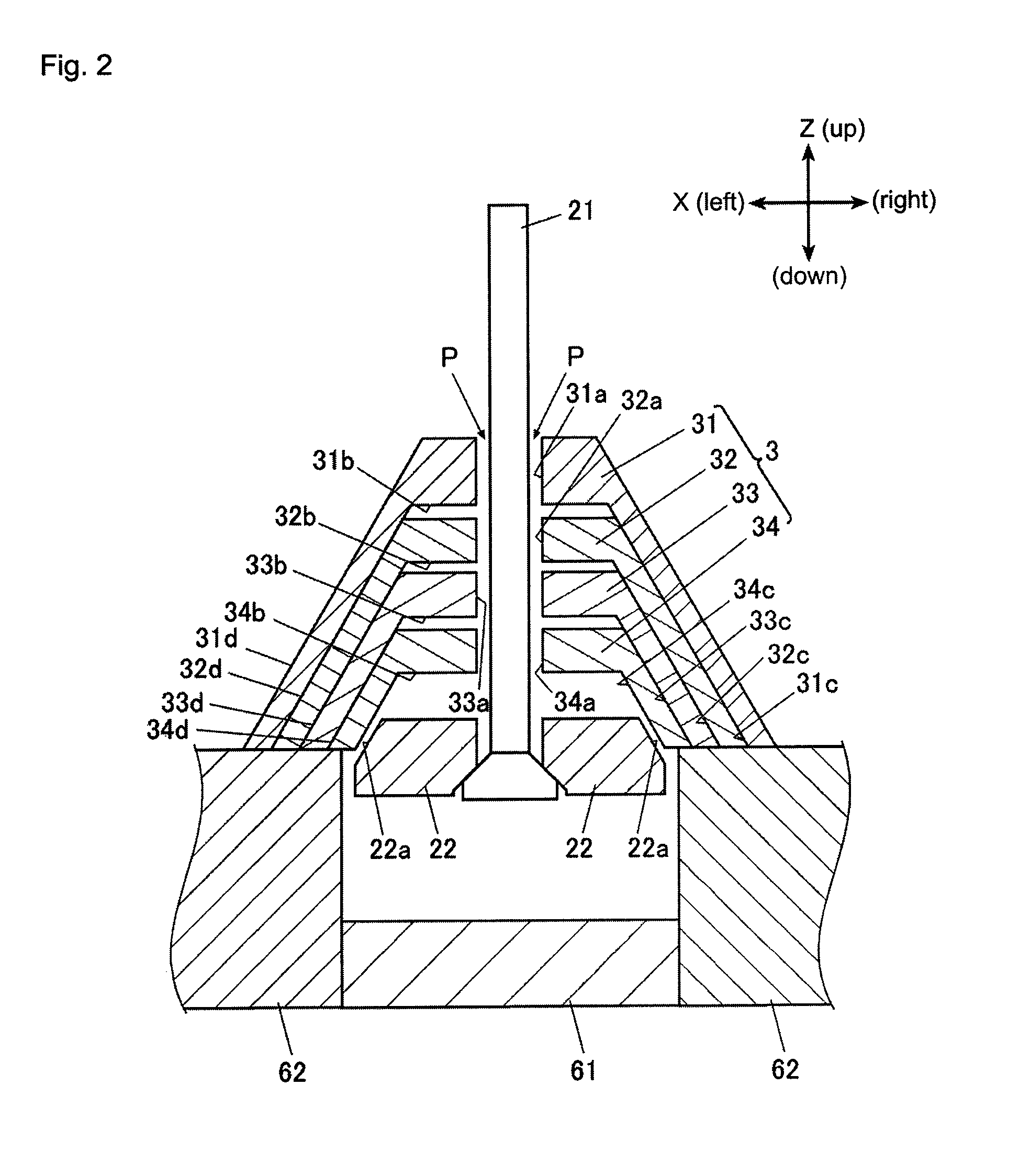Hardness tester
a tester and hardness technology, applied in the field of hardness testers, can solve the problems of inability to generate correct test force, inability to compact the whole tester, and inability to make the horizontal direction of the weight b>203/b> stable, etc., and achieve the effect of accurate test for
- Summary
- Abstract
- Description
- Claims
- Application Information
AI Technical Summary
Benefits of technology
Problems solved by technology
Method used
Image
Examples
example 1
Alternate Example 1
[0044]An example shown in FIG. 8, for example, differs from the embodiment in the shape of the weight 3. In order to simplify the description, identical reference numerals are used for structures similar to those in the embodiment and a detailed description thereof is omitted. Specifically, in the example shown in FIG. 8, a weight 7 has a plurality (three in the present example) of weights 71, 72, and 73 stacked on top of each other in the vertical direction, each of the weights 71, 72, and 73 having a different predetermined weight. The weight 7 is formed so as to have substantially a round columnar shape in a state where each of the weights 71, 72, and 73 are stacked on top of each other. A hollow portion 71a, 72a, and 73a is provided to each of the weights 71, 72, and 73, respectively, the hollow portions 71a, 72a, and 73a running through a horizontal-direction center in the vertical direction. The hollow portions 71a, 72a, and 73a are formed to be wider than t...
example 2
Alternate Example 2
[0045]An example shown in FIGS. 9(A) to 9(C) differs from the embodiment in the structure of the test force switching mechanism 6. In order to simplify the description, identical reference numerals are used for structures similar to those in the embodiment and a detailed description thereof is omitted. Moreover, FIGS. 9(A) to 9(C) are treated as illustrating the weight 3 in a two-dot-dashed line. Specifically, in the example shown in FIGS. 9(A) to 9(C), a test force switching member 8 as a test force switcher is positioned so as to be capable of supporting a bottom end of the plurality of weights 31, 32, 33, and 34. In addition, the test force switching member 8 has a portion of a substantially rectangular shaped plate-shaped member cut away to form a notch 81 and form substantially a “V” shape, as seen in a plan view. The test force switching member 8 is configured to be capable of advance and retreat in a direction (horizontal direction) in which an open end 81a...
PUM
| Property | Measurement | Unit |
|---|---|---|
| angle | aaaaa | aaaaa |
| hardness tester | aaaaa | aaaaa |
| hardness | aaaaa | aaaaa |
Abstract
Description
Claims
Application Information
 Login to View More
Login to View More - R&D
- Intellectual Property
- Life Sciences
- Materials
- Tech Scout
- Unparalleled Data Quality
- Higher Quality Content
- 60% Fewer Hallucinations
Browse by: Latest US Patents, China's latest patents, Technical Efficacy Thesaurus, Application Domain, Technology Topic, Popular Technical Reports.
© 2025 PatSnap. All rights reserved.Legal|Privacy policy|Modern Slavery Act Transparency Statement|Sitemap|About US| Contact US: help@patsnap.com



